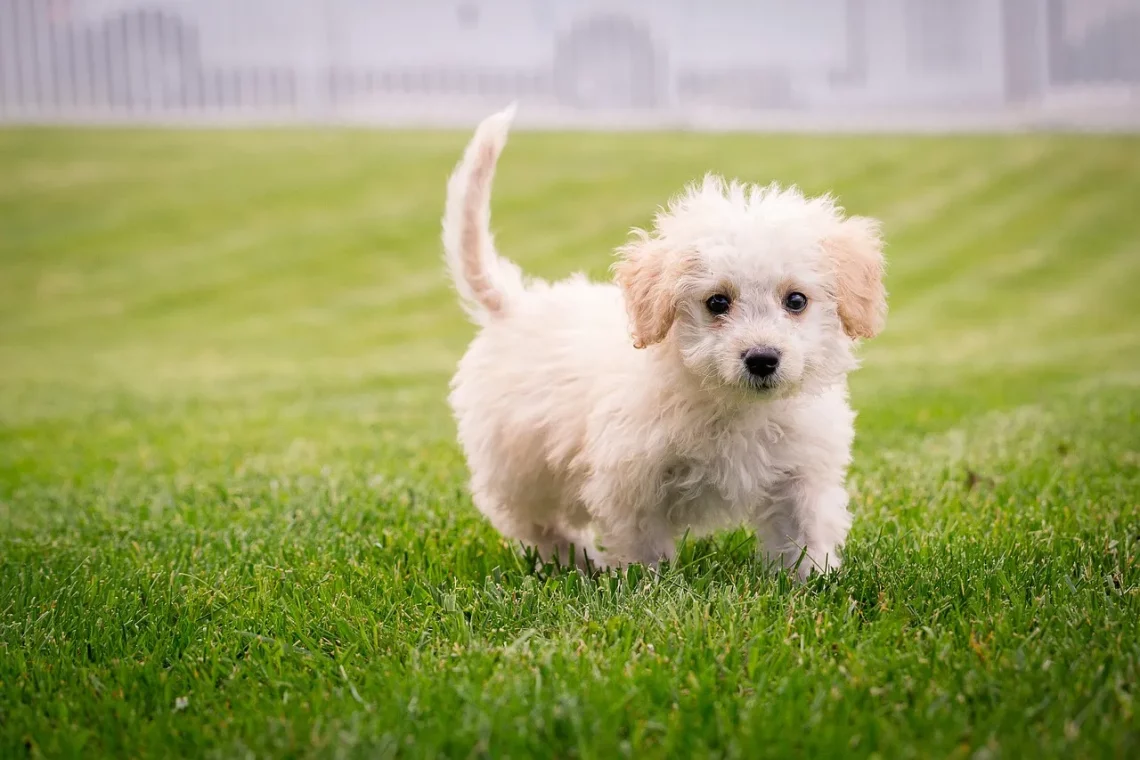
Managing Your High Energy Puppy: Tips for a Happy and Active Life
Managing a high-energy puppy can be both a joyous and challenging experience for many pet owners. Puppies are naturally curious and full of life, exploring their surroundings with an energy that can sometimes seem boundless. This exuberance is one of the many reasons why people fall in love with dogs; however, it can also lead to mischief if not properly managed. From chewing on furniture to excessive barking, a high-energy pup may inadvertently create a chaotic environment if their needs are not adequately met.
Understanding the unique characteristics of high-energy breeds is essential for providing them with a fulfilling and balanced life. These puppies require more than just food and shelter; they need mental and physical stimulation to thrive. Engaging them in various activities not only helps burn off that excess energy but also strengthens the bond between the owner and the pet. When puppies are adequately stimulated, they are less likely to engage in unwanted behaviors, making for a happier household.
As a responsible pet owner, it’s crucial to explore effective strategies for channeling your puppy’s energy in positive ways. By creating a structured routine that balances exercise, training, and socialization, you can cultivate a happy and well-adjusted companion. Embracing this journey will not only enhance your puppy’s quality of life but will also contribute to your own fulfillment as a pet owner.
Understanding Your Puppy’s Needs
Every puppy is unique, and understanding their individual needs is fundamental to managing their energy levels effectively. High-energy dogs often belong to breeds that were originally developed for specific tasks, such as hunting, herding, or working. These breeds—like Border Collies, Labrador Retrievers, and Jack Russell Terriers—require substantial physical and mental activity to remain happy and healthy.
Recognizing the signs of boredom in your puppy is essential. A high-energy pup may exhibit behaviors like digging, excessive barking, or chewing on household items when they lack stimulation. These actions are not merely mischievous; they can be signals that your puppy needs more engagement in their daily life. It’s important to observe their behavior closely to tailor activities that meet their needs.
In addition to physical exercise, mental stimulation plays a vital role in keeping your puppy engaged. High-energy puppies thrive on challenges that require problem-solving skills. Puzzle toys, interactive games, and training exercises can provide the mental workout they crave. Incorporating training sessions into your routine not only helps to reinforce good behavior but also serves as a constructive outlet for their energy.
Establishing a routine that includes playtime, training, and socialization will help your puppy feel secure and fulfilled. Consistency is key; dogs are creatures of habit and thrive on predictable schedules. By ensuring that your puppy receives adequate attention, you’ll foster a strong bond while also meeting their physical and emotional needs.
Exercise: The Key to a Happy Puppy
Exercise is paramount when it comes to managing a high-energy puppy. Regular physical activity helps to burn off excess energy, which can lead to a calmer and more content pet. The type and amount of exercise your puppy requires will depend on their breed, age, and overall health.
For younger puppies, short bursts of activity are often more effective than long, strenuous sessions. Playtime can include games of fetch, tug-of-war, or simply running around in a secure area. These activities not only provide physical exercise but also enhance your puppy’s coordination and agility.
As your puppy grows, consider incorporating more structured forms of exercise, such as obedience training classes or agility courses. These activities not only challenge them physically but also engage their minds. Socializing with other dogs during playdates or at dog parks can also be beneficial, as it allows your puppy to learn appropriate social behaviors while exercising.
It’s essential to tailor the exercise routine to your puppy’s specific needs. Some high-energy breeds may require more vigorous activities, such as running or hiking, while others may be satisfied with a good game of fetch. Always consult with your veterinarian to determine the best exercise regimen for your puppy, especially if you have concerns about their health or physical limitations.
Remember to make exercise a fun and enjoyable experience for your puppy. Incorporating variety into their routine will keep them engaged and excited about their physical activities. A well-exercised puppy is not only happier but also less likely to engage in destructive behaviors.
Training and Socialization: Building a Well-Behaved Companion
Training and socialization are critical components of raising a high-energy puppy. Proper training not only helps to establish boundaries and expectations but also gives your puppy a sense of structure and discipline. Positive reinforcement methods, such as praise and treats, can be highly effective in encouraging desired behaviors.
Start with basic commands, such as sit, stay, and come. These commands are foundational skills that can enhance safety and facilitate better communication between you and your puppy. Training sessions should be short and engaging, as puppies have limited attention spans. Aim for 5 to 10-minute sessions, focusing on one command at a time.
Socialization is equally important for high-energy puppies. Exposing them to different environments, people, and other animals will help them develop confidence and reduce fear-based behaviors. Puppy classes can be an excellent way to provide structured socialization opportunities while also reinforcing training.
Gradually introduce your puppy to new experiences, ensuring that each encounter is positive. This can include trips to the vet, outings to pet-friendly stores, or meeting new friends. The goal is to create a well-rounded dog that feels comfortable in various situations.
Keep in mind that patience is key when training and socializing your puppy. They may not grasp commands or social cues immediately, and that’s perfectly normal. Consistency, positive reinforcement, and a loving approach will yield the best results over time.
Creating a Stimulating Environment
In addition to exercise and training, creating a stimulating environment is vital for a high-energy puppy. A well-designed space can provide both physical and mental engagement, helping to keep your puppy entertained and content.
Begin by ensuring that your home is safe and secure for your puppy. Remove any potential hazards, such as toxic plants or small objects that can be swallowed. Providing a designated play area filled with toys will encourage your puppy to explore and engage in healthy play. Rotate toys regularly to maintain their interest and prevent boredom.
Consider incorporating interactive toys that challenge your puppy mentally. Puzzle feeders, treat-dispensing toys, and snuffle mats can all stimulate your puppy’s mind while rewarding them for their efforts. These types of toys encourage problem-solving and can help to keep your puppy occupied, particularly when you are unable to engage directly.
Setting aside time for structured play sessions can also be beneficial. Engage your puppy in games that require them to think and strategize, such as hide-and-seek or scent work. These activities not only provide physical exercise but also serve as mental stimulation, helping to tire your puppy out more effectively.
Lastly, don’t forget the importance of quiet time. High-energy puppies also need moments of rest to recharge. Create a cozy nook where your puppy can retreat when they need to relax. This will help them learn to appreciate downtime and promote a balanced lifestyle.
In conclusion, managing a high-energy puppy requires a thoughtful approach that combines exercise, training, and environmental enrichment. By understanding your puppy’s needs and providing them with the right tools and experiences, you can foster a happy, well-adjusted, and active companion.
**Disclaimer:** The information provided in this article is for general informational purposes only and is not intended as medical advice. If you have any health concerns regarding your pet, please consult with a qualified veterinarian.




